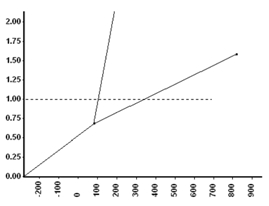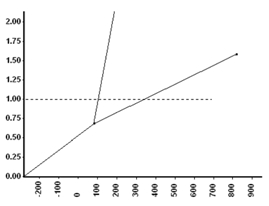Hey everyone. So a phase diagram represents a map of the physical state of a pure substance as a function of pressure, which is on our Y axis, and temperature, which is on our X axis. If we take a look here at a typical phase diagram, here we have our pressure and it's on our Y, and then down here is our temperature, which is X. We're going to say here that we have different portions of the face diagram that you need to become familiar with in order to fully understand what happens to any pure substance as we play around with its temperature and pressure.
Now here we're going to say a triple point. This is a unique set of conditions where three states of matter are stable and in equilibrium with one another. For us to identify the triple point, we first need to realize that three states of matter are represented on a typical phase diagram. So we take a look here. Let's say we're starting off in this area of our phase diagram. In this area, we would say that our pressure is higher and our temperature is lower. These conditions are ideal for the solid form of a pure substance. So here we have our solid.
If we start to increase our temperature, we can have our solid basically melt into a liquid. So here we have our liquid phase within this region. And then finally, if we keep pushing the envelope in terms of temperature, if we want or we decrease the pressure greatly, we go into the gaseous state. So here this is our gaseous state here. Now our solid, liquid, and gas, they all meet here at point 1.1. Here represents our triple point.
Next, we have our critical point. This is just our final set of pressure and temperature conditions where a liquid and gas are distinguishable. So if we take a look here, point 2 represents my critical point and again this is our triple point. So at this critical point, basically our pressure is pretty high up there and our temperature is pretty high. If we keep moving towards this direction though, we're going to go to a place where it's no longer a liquid, it's no longer a gas, it becomes something called a supercritical fluid.
Now if you want to think about what's a good example of a supercritical fluid. Now if you've watched television and movies, you'll see every time we have space explorations towards the sun. You can see the sun being depicted as like lava or something close to that. In reality, the sun is made up of hydrogen gas. If that's such a high temperature and pressure, then it kind of looks a little bit like lava. But it's not exactly liquid, it's not exactly a gas, it's supercritical fluid.
So just remember when we're looking at a typical phase diagram, these are the portions you need to remember. Where we have our pressure on the Y, our temperature on the X axis, we have our solid, liquid, and gaseous phases within their different sectors. And then we have our triple point which connects our three phases together and then finally our critical point. Beyond that point, we're no longer a liquid or gas, but instead a supercritical fluid.





